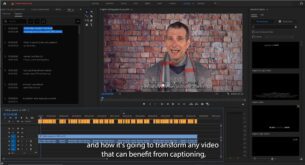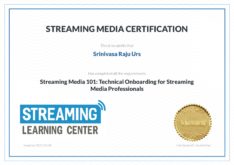I really was positive about HEVC when there was one pool from MPEG LA with a $25M/year cap. It was three times the cost of H.264, but HEVC was a better technology, so it seemed reasonable, and there were no content royalties. Certainly the industry thought the MPEG LA pool was reasonable as there was barely a murmur in response.
Then HEVC Advance came out at up to ten times the per unit cost with no cap, which spawned outrage and the formation of the Alliance for Open Media (AOM). Though HEVC Advance has reduced their cap to $45M/year and taken other steps to advance adoption, now there’s a third pool claiming to offer “most comprehensive portfolio of standard-essential HEVC patents available.” This could easily push annual royalties into nine figures. Fortunately, two advances on the AOM AV1 codec front rekindle hopes that it will be relevant in the short term.
The Third HEVC Pool
First, Velos Media launched the new “independent licensing platform” on March 31, 2017, which includes HEVC patents from Ericsson, Panasonic, Qualcomm, Sharp and Sony. On one hand, the new patent pool is a good thing, because it includes most of the major known HEVC IP owners still not in a group. Finally, at some point in the near term, the full royalty burden on HEVC will be known.
On the other hand, my personal over/under for the royalty cap I think Velos will charge is $40/million, and it’s tough to say that another $40M/annual charge is a good thing for anyone. Beyond the three pools, there are also potential royalties to be paid to Technicolor, who was a member of the HEVC Advance pool, and later withdrew.
Also noteworthy is the fact that Samsung, who was and remains a licensee in the MPEG LA pool, is also now a member of the HEVC Advance pool. I write about what that means in a column that will soon appear in Streaming Media Magazine. The CliffNotes version is that any licensees who join both pools won’t have to pay for the Samsung patents twice, which should substantially reduce the total cost of licensing both pools.
AVC1 Advances
In the meantime, while the known costs for HEVC continue to rise, the alternative codec that HEVC IP owners spawned, the AOM AV1 codec, is becoming more real. Now up in Streaming Media is an article entitled, Bitmovin Pushes AV1 Forward, Joins Alliance for Open Media. The short story here is that Bitmovin is demonstrating live AV1 encoding at NAB, and that they expect the AV1 bitstream to be frozen in the third quarter of 2017.
Before the Bitmovin announcement, the last I had heard was bitstream freeze by end of 2017, and that was uncertain. To be clear, Bitmovin’s technology demo is just that; live encoding takes 200 CPU cores in the Bitmovin cloud, and playback is via a standalone player that’s unviable for most streaming producers who vastly prefer browser-based playback. So it’s not a real product yet.
Still, as I discuss in the Streaming Media article, browser support for AV1 shouldn’t take long, given that Google (Chrome), Microsoft (Edge), and Mozilla (Firefox) were founding members. This assumption was verified when a colleague forwarded me a link to Bugzilla@Mozilla, which reported issues relating to “Support the new AV1 video codec.” It’s coming folks, it’s really coming.
As I’ve written before, like Justin Bieber and the Kardashians, I believe that technology developers deserve as much money as they can possibly make from their efforts. If you can charge it, and people pay it, you’ve earned it. The critical mistake HEVC IP owners made was assuming that they were the only game in town.
Speaking of that, a recent encoding.com report detailing their calendar year 2016 encodes revealed that HEVC usage among their customers dropped by 50%, from 6% to 3%. Meanwhile, open-source VP9, in many ways the predecessor to AV1, debuted at 11%. I’m not a marketing genius by any stretch, but it seldom makes sense to raise the cost of a product experiencing dramatic loss of market share. It’s tough to say how the HEVC vs. AV1 battle will turn out, except it feels like there’s a 99.99% chance it will involve lawyers.
 Streaming Learning Center Where Streaming Professionals Learn to Excel
Streaming Learning Center Where Streaming Professionals Learn to Excel









